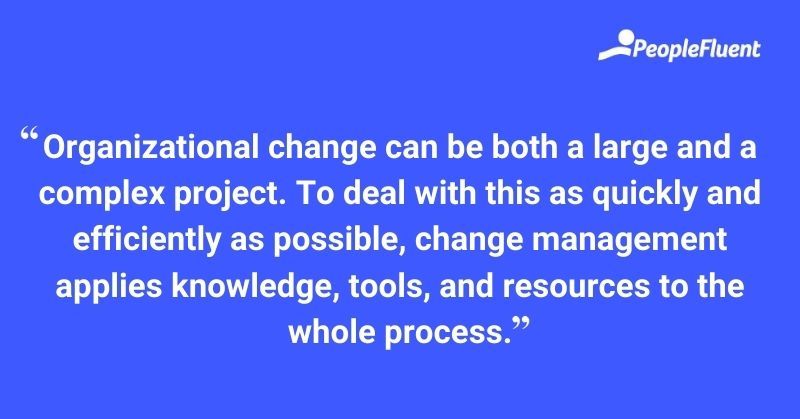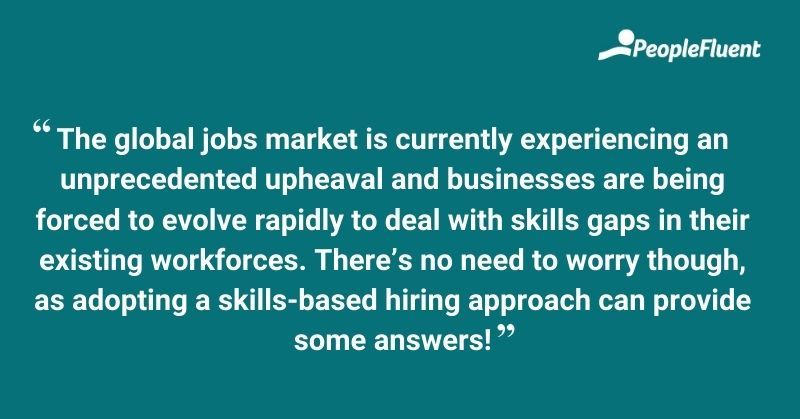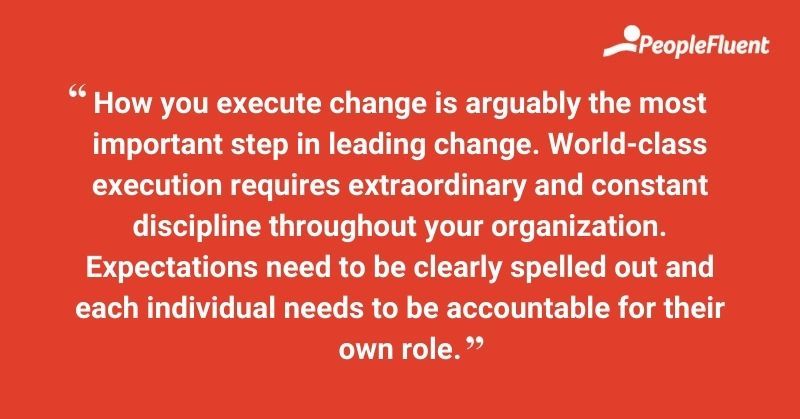Published: Dec 14, 2021Time to read: 6mins Category: Insights
Skills-Based Hiring: 5 Ways Change Management Can Help You Nail It—Every Time!
Between the changing landscape of work and talent shortages, many are looking to beef up their businesses with a shift to a skills-based approach to their workforce. A great way of doing this is to hire for skills instead of degrees and this means that current hiring processes may need to be changed.
We get it—knowing how to change isn’t always easy! For some, the process of making such monumental shifts to your business seems daunting at first. But help is at hand, as a robust change management strategy can help to make the process a lot easier.
But first, let’s take a quick look at what a change management strategy actually means.
What Is Change Management?
Organizational change can be both a large and a complex project. To deal with this as quickly and efficiently as possible, change management applies knowledge, tools, and resources to the whole process. The first thing you need is clarity, as once business strategies are clearly defined, they can be more easily adapted. The changes you need to make might go even further as structures, procedures, and technologies get refined to meet the challenges that your business faces. Ultimately, the success of change management can be measured in just how good your organization is at dealing with the rollout and adoption of new processes.

YOU MIGHT ALSO LIKE | ‘Don’t Reinvent the Wheel, Shift It! How a Skills-Based Workforce Improves Recruitment, DE&I, and Innovation’
Why Is Change Management Important for Shifting to a Skills-Based Hiring Approach?
The global jobs market is currently experiencing an unprecedented upheaval and businesses are being forced to evolve rapidly to deal with skills gaps in their existing workforces. But there’s no need to worry, as adopting a skills-based hiring approach can provide some answers! Putting skills at the core of what you do can not only result in a talent pool capable of meeting any challenge but also boost your reputation. If skills aren’t currently your primary focus during the hiring process it might mean that organizational change is needed. And in order to make the shift as smooth and efficient as possible, change management is crucial. Research shows that initiatives with excellent change management are six times more likely to meet objectives than those with poor change management.
Change management can not only help with the shift to a skills-based hiring policy but it also future-proofs your business. One of its key benefits is to build lasting institutional perseverance, which means you’ll have the ability to embrace and readily adapt to every major change initiative going forwards. It makes good sense as the workplace is increasingly having to respond to rapid changes. In other words, change management can open doors for organizational survival now and into the future.
5 Change Management Imperatives
Obviously, you want to make any organizational change as smooth and seamless as possible, so here are five change management imperatives for success.
1. Embrace Reality
For your changes to be successful, everyone involved needs to understand what changes are actually taking place. Research from Gartner shows that top-down change initiatives are much less effective than open-source approaches. By giving everyone a say in the changes that will affect them, the rate of change success jumps up to 58%, compared to just 34% for directive changes.
As a leader, it’s important to invest time in understanding the different perspectives and realities of individuals impacted by this change. You should make time to meet with employees, clients, suppliers, and partners regardless of your rank, title, or seniority. This process of “rolling up your sleeves” and “getting dirty” to make effective decisions based on the people around you will allow you to better see how the changes could affect everyone in the organization.
2. Prioritization and Alignment
In any company, there will always be lots of competing priorities. It’s up to leaders to decide what changes need to be made and in what order. That means you need to prioritize some changes over others because, if you don’t, your strategy runs the risk of failure due to conflicting priorities. Change leaders need to be able to decide what the most important steps are and how to get them done.

RELATED READING | ‘3 Ways to Use Skills-Based Recruiting to Improve Retention’
3. Communication
It’s good to talk. Frequent, clear, and consistent communication can’t be overstated in its importance in leading and implementing successful initiatives. You can pretty much assume that all parties involved are already dealing with information overload from conflicting priorities. It’s likely that any feeble attempts to communicate will just be lost among the noise.
Be mindful that your people respond very differently to different forms of communication—you can’t assume that everyone listens in the same way. Some read every email while others have inboxes overflowing with unopened messages. You should always be communicating important information in several different ways.
4. Execution
How you execute change is arguably the most important step in leading change. World-class execution requires extraordinary and constant discipline throughout your organization. Expectations need to be clearly spelled out and each individual needs to be accountable for their own role.
Effective execution requires strong leadership and a management team that embraces a commitment towards successfully implementing strategic change initiatives that builds organizational resilience. Your culture should include a drive towards action, results, and accountability.
5. Institutionalization
Without even knowing it, you can sometimes find yourself in the mindset that you constantly have to be moving forwards. While leaders continuously face a host of economic and competitive threats, there is a natural tendency to shift attention to the next initiative or challenge. When managing change, however, this lack of attention and focus on completing or institutionalizing the change initiative often results in the envisioned changes, or “to be state” will not be fully attained. If leaders lose focus before the complete scope of the change is fully completed, your organization will not enjoy the full benefits of the change as envisioned.

MORE ON THIS THEME | ‘The Rise of Skills in a Revised Talent Landscape’
Ready to Embrace Skills-Based Hiring?
Find out how PeopleFluent can provide you with the tools you need to implement the changes you want to see.